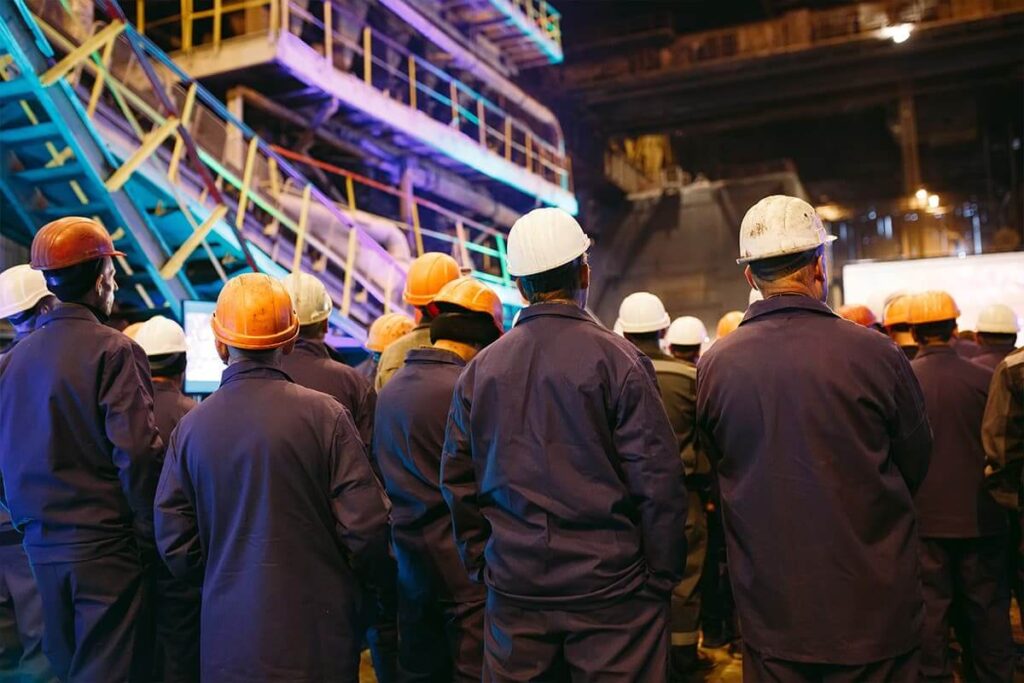Contents
What is a Muster Point?
A muster point is a designated safe area where employees and other personnel can gather in the event of an emergency evacuation. Muster points are often used in workplaces, schools, and other public places. By having a predetermined muster point, you can ensure that everyone on your site knows where to go in case of an emergency. This can help minimise confusion and chaos, and help ensure that everyone is safe and accounted for. But what is the difference between a muster point and an assembly point?
While muster points and assembly points are often used interchangeably, there is a distinction between the two. A muster point is a predetermined area where employees gather in case of emergencies, while an assembly point is a location for information updates, shelter, provisions, and necessities. A muster point is intended for use in the event of an evacuation, while an emergency assembly point is typically used when people have been displaced from their homes.
Benefits of Having a Muster Point
A muster point can help your employees safely exit risky premises during an emergency evacuation. By having a designated place to gather, everyone will be in the same location and easier to account for. This can help emergency responders as they work to evacuate the site and ensure everyone is safe.
A muster area also provides a central location for company leadership to assess the situation and direct employees as they return to work. Having a clear plan for returning to operations will help you get back up and running as quickly as possible.
What Are the Criteria For Having A Good Muster Point?
- The muster point should be easily accessible and well-marked.
- It should be large enough to accommodate all employees and anyone else on the worksite.
- There should be clear paths leading to the muster point from all areas of the worksite.
- The muster point should be at a safe distance, away from potential hazards.
- There should be multiple muster points to make the evacuation process more efficient.
- It should have adequate supplies (e.g. water, first aid kits, flashlights, etc.) and be staffed by employees who are familiar with emergency procedures.
What is the Best Place to be Assigned as a Muster Area?
A muster point should be in a safe, easily accessible location. It is important to consider the layout of your worksite when determining where to place your muster point. If an emergency evacuation is required, you want all of your employees to be able to gather safely and quickly.Some factors to consider when choosing a muster area are:
- The layout of the worksite.
- The number of employees on site
- The distance between the muster point and the emergency exit
- The availability of parking near the muster point
- The type of emergency most probable to occur, for example, fire, tornado, chemical spill, hurricane, etc.
Once you have determined a safe place for your muster point, make sure all employees are aware of its location. You may also want to post muster point signs to direct employees to the safest locations during emergencies. Having a well-defined emergency plan and ensuring all employees know their role in case of an emergency will help minimise chaos and injury during an evacuation.

How To Make Muster Points More Effective
Assign coordinators
Evacuations shouldn’t look like a sea of disorganised people dashing to get out of the facility and on to a safer location. Keeping evacuations orderly can only be done when there are emergency managers on the floor to help people rally to a certain point
Assign emergency coordinators for each floor or department. They’ll be responsible for making sure that everyone on the floor has evacuated, supervising the shutdown of infrastructure, coordinating with first responders and medical personnel, and taking roll calls at muster points.
Emergency managers will be the point person who will report to the company’s safety officer or security director. They’ll help maintain the chain of command to improve response times and critical decision-making processes.
Document the evacuation process
Documenting the entire process helps maintain consistency and replicability. It helps define responsibilities, roles, and the chain of command during emergencies. Create an emergency action plan (EAP). This document will define the muster areas, the roles of every point person, the mustering process, and contingencies during worst-case scenarios. Everyone in the company should understand what’s written in the EAP to know what they should do to ensure safety.
Rehearse and train employees
Test out the plan through rehearsing the evacuation plan. Regularly schedule emergency drills to help employees familiarise themselves with the procedures, so they’ll know what to do when an actual crisis comes. Evacuation training also helps you and your team identify problems with the plan which they can adjust before actual emergency strikes. For example, you’ll be able to test the accessibility of the muster areas, the efficiency of the evacuation procedure, and the things that you might have missed during the planning process.
Review the plan
The environment will constantly change, so you need to adapt accordingly. Spaces will be redesigned, neighbouring buildings will be renovated, and other factors that will be out of your control may happen.New risks might appear that will force you to change your EAP.
For example, a bigger building might be built near your area. If your business is in an industrial zone, a new company that emits hazardous substances might appear. Whatever the situation is, you have to reassess whether the existing evacuation plan still ensures the safety of employees.
Utilise technology like RTLS
You can improve emergency mustering processes by implementing a real-time location system (RTLS). An RTLS can accurately track the location of a person in real-time which is a critical piece of information during emergencies. It can be used to automatically notify emergency coordinators of missing employees in the muster area during the evacuation process.
Litum is a leading provider of automated mustering using RTLS. We use BLE Beacon Technology to attach transmitters on electronic ID badges. These badges can transmit the identity of the wearer and their location within a wide coverage area. Plus, our system runs on a cloud server and can communicate through GSM so it can continue working even without network or power connectivity.
When an emergency does occur, make sure everyone knows where to go and what to do. Post signage and maps throughout your workplace, label evacuation routes and conduct regular drills to ensure that everyone is familiar with the plan. With a muster point in place, you can rest assured that your employees will be safe and ready to return to work as soon as possible.
Your Company Need a Muster Point
While not all businesses will need a muster point, it is generally a good idea to have one in place. If your company operates in a high-risk environment, or if you have a large number of employees, it is especially important to have a muster point. By planning ahead, you can ensure that your employees are safe and accounted for in the event of an emergency.
If you don’t have a muster point designated, or if it’s not up to code, now is the time to create one. Review your company’s emergency plan and make sure that the muster point is included. Work with local authorities to ensure that the area is properly mapped out and accessible during emergencies.




